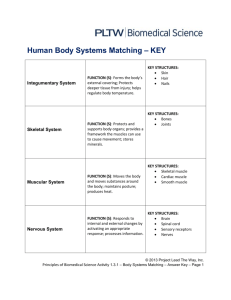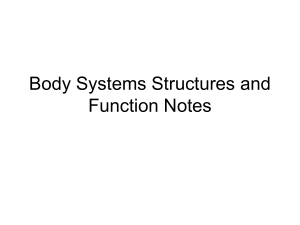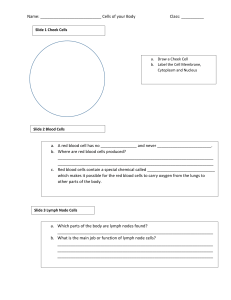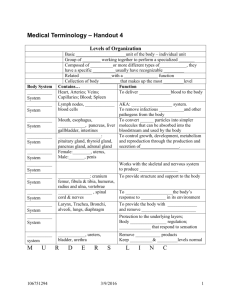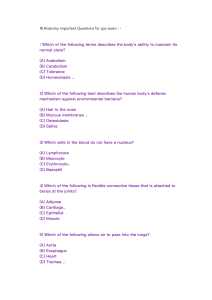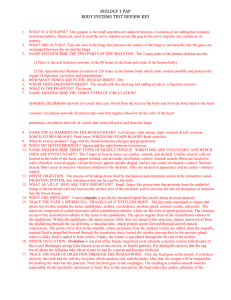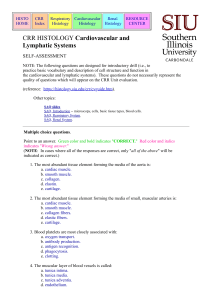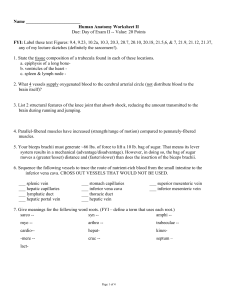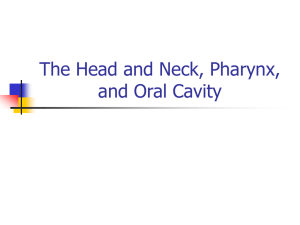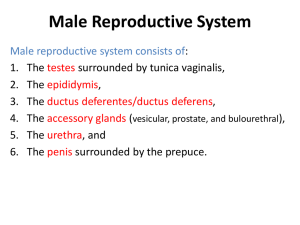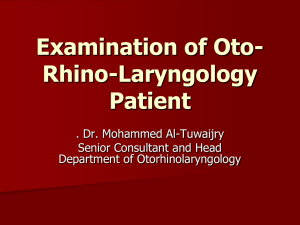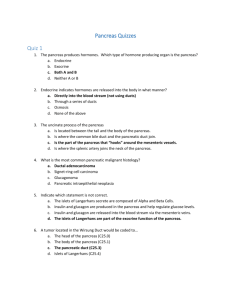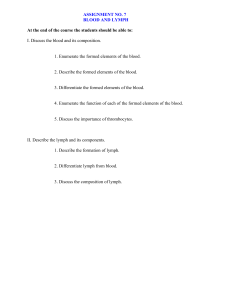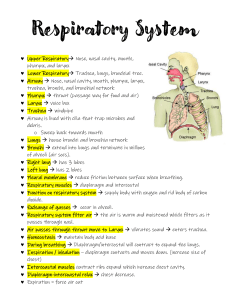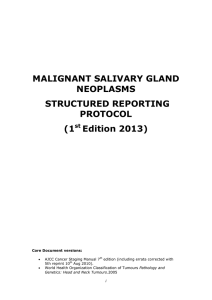Body Sytem Chart Answer Key
advertisement
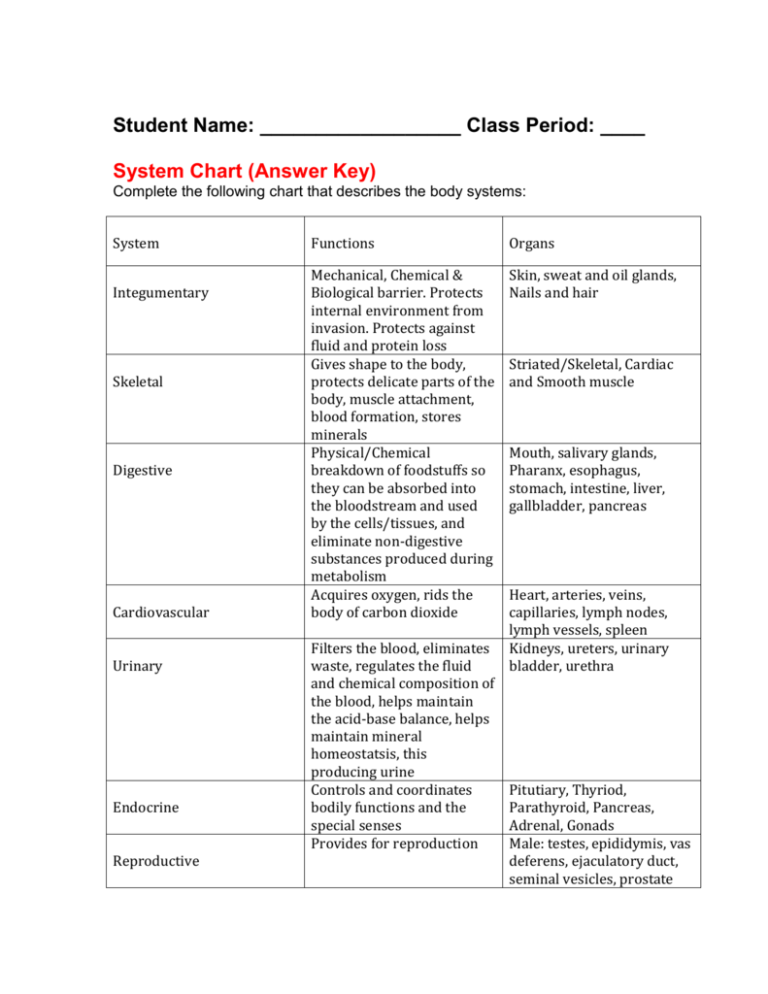
Student Name: __________________ Class Period: ____ System Chart (Answer Key) Complete the following chart that describes the body systems: System Integumentary Skeletal Digestive Cardiovascular Urinary Endocrine Reproductive Functions Organs Mechanical, Chemical & Biological barrier. Protects internal environment from invasion. Protects against fluid and protein loss Gives shape to the body, protects delicate parts of the body, muscle attachment, blood formation, stores minerals Physical/Chemical breakdown of foodstuffs so they can be absorbed into the bloodstream and used by the cells/tissues, and eliminate non-digestive substances produced during metabolism Acquires oxygen, rids the body of carbon dioxide Skin, sweat and oil glands, Nails and hair Filters the blood, eliminates waste, regulates the fluid and chemical composition of the blood, helps maintain the acid-base balance, helps maintain mineral homeostatsis, this producing urine Controls and coordinates bodily functions and the special senses Provides for reproduction Striated/Skeletal, Cardiac and Smooth muscle Mouth, salivary glands, Pharanx, esophagus, stomach, intestine, liver, gallbladder, pancreas Heart, arteries, veins, capillaries, lymph nodes, lymph vessels, spleen Kidneys, ureters, urinary bladder, urethra Pitutiary, Thyriod, Parathyroid, Pancreas, Adrenal, Gonads Male: testes, epididymis, vas deferens, ejaculatory duct, seminal vesicles, prostate Muscular Nervous Lymphatic Respiratory Contract and relax to cause movement by pulling bones, stabilize body position and generate heat Monitors internal and external environments with receptors, interprets stimuli, responds to stimuli by sending an electrical message to another nerve, a muscle, or a gland; thus, regulates bodily activities. Special senses are taste, smell, sight, hearing and equilibrium. Carries some tissue fluid and wastes to blood, assists with fighting infection Breaths in oxygen and eliminates carbon dioxide gland, penis, urethra. Female: ovaries, fallopian tubes, uterus, vagina, breasts Skeletal, smooth and cardiac muscle. Nerves, brain, spinal cord and special sense organs Lymph nodes, lymph vessels, spleen tonsils, and thymus gland Nose, pharynx, larynx, trachea, bronchi lungs

